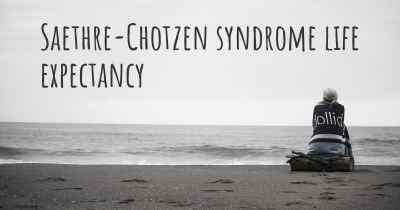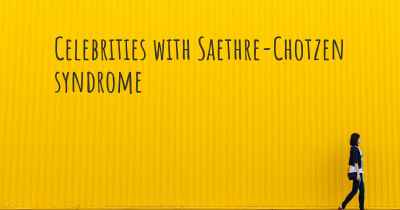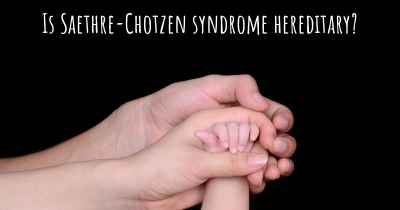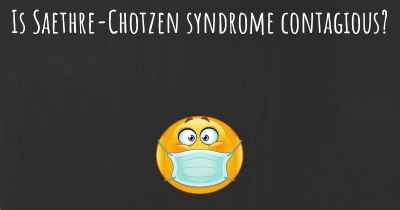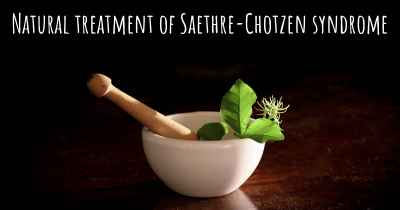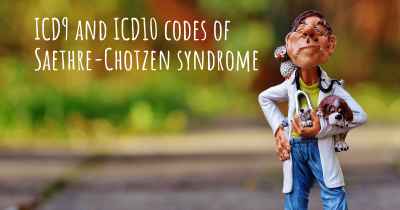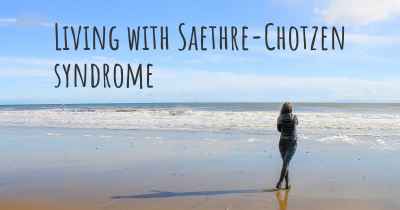Which are the causes of Saethre-Chotzen syndrome?
See some of the causes of Saethre-Chotzen syndrome according to people who have experience in Saethre-Chotzen syndrome
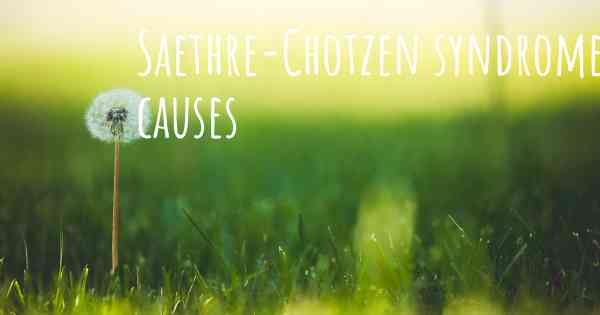
Saethre-Chotzen syndrome, also known as acrocephalosyndactyly type III, is a rare genetic disorder that affects the development of the skull, face, and limbs. It is characterized by the premature fusion of certain skull bones, leading to an abnormal head shape and facial features. Additionally, individuals with Saethre-Chotzen syndrome often have hand and foot abnormalities, such as fused or webbed fingers and toes.
The primary cause of Saethre-Chotzen syndrome is a mutation in the TWIST1 gene. This gene provides instructions for producing a protein that plays a crucial role in the early development of various tissues in the body, including the bones of the skull and face. Mutations in the TWIST1 gene disrupt the normal function of this protein, leading to the characteristic features of Saethre-Chotzen syndrome.
Most cases of Saethre-Chotzen syndrome are sporadic, meaning they occur randomly and are not inherited from parents. These cases typically result from new mutations in the TWIST1 gene that arise during the formation of reproductive cells or early embryonic development. However, in some instances, the condition can be inherited in an autosomal dominant pattern, which means that a person only needs to inherit one copy of the mutated gene from either parent to develop the syndrome.
While the exact reasons for the occurrence of sporadic mutations in the TWIST1 gene are not fully understood, certain factors may increase the risk. Advanced paternal age at the time of conception has been associated with an increased likelihood of new mutations in general, including those in the TWIST1 gene. Additionally, exposure to certain environmental factors or toxins during pregnancy may also play a role in the development of Saethre-Chotzen syndrome, although further research is needed to establish a definitive link.
It is important to note that Saethre-Chotzen syndrome is a genetic disorder, and it is not caused by any actions or choices made by the affected individual or their parents. It is simply the result of a genetic mutation that occurs spontaneously or is inherited.
Early diagnosis of Saethre-Chotzen syndrome is crucial for appropriate medical management and treatment. Genetic testing can confirm the presence of a TWIST1 gene mutation, helping to establish a definitive diagnosis. Additionally, a thorough physical examination and evaluation of the individual's medical history can aid in identifying the characteristic features associated with the syndrome.
While there is currently no cure for Saethre-Chotzen syndrome, treatment focuses on managing the symptoms and complications associated with the condition. This may involve surgical interventions to correct craniofacial abnormalities, such as skull reshaping or separation of fused bones. Hand and foot abnormalities can also be addressed through surgical procedures to improve functionality and appearance. Additionally, individuals with Saethre-Chotzen syndrome may benefit from ongoing medical care and support from a multidisciplinary team of healthcare professionals, including geneticists, craniofacial surgeons, orthopedic specialists, and psychologists.
In conclusion, Saethre-Chotzen syndrome is primarily caused by mutations in the TWIST1 gene, which disrupts normal development of the skull, face, and limbs. While most cases are sporadic, some can be inherited in an autosomal dominant pattern. Factors such as advanced paternal age and environmental exposures may increase the risk of sporadic mutations. Early diagnosis and appropriate medical management are essential for individuals with Saethre-Chotzen syndrome to optimize their quality of life and address the associated symptoms and complications.
As increased parental age may play a roll in the development of genetic mutations.
Posted Mar 14, 2017 by Sue 1000
